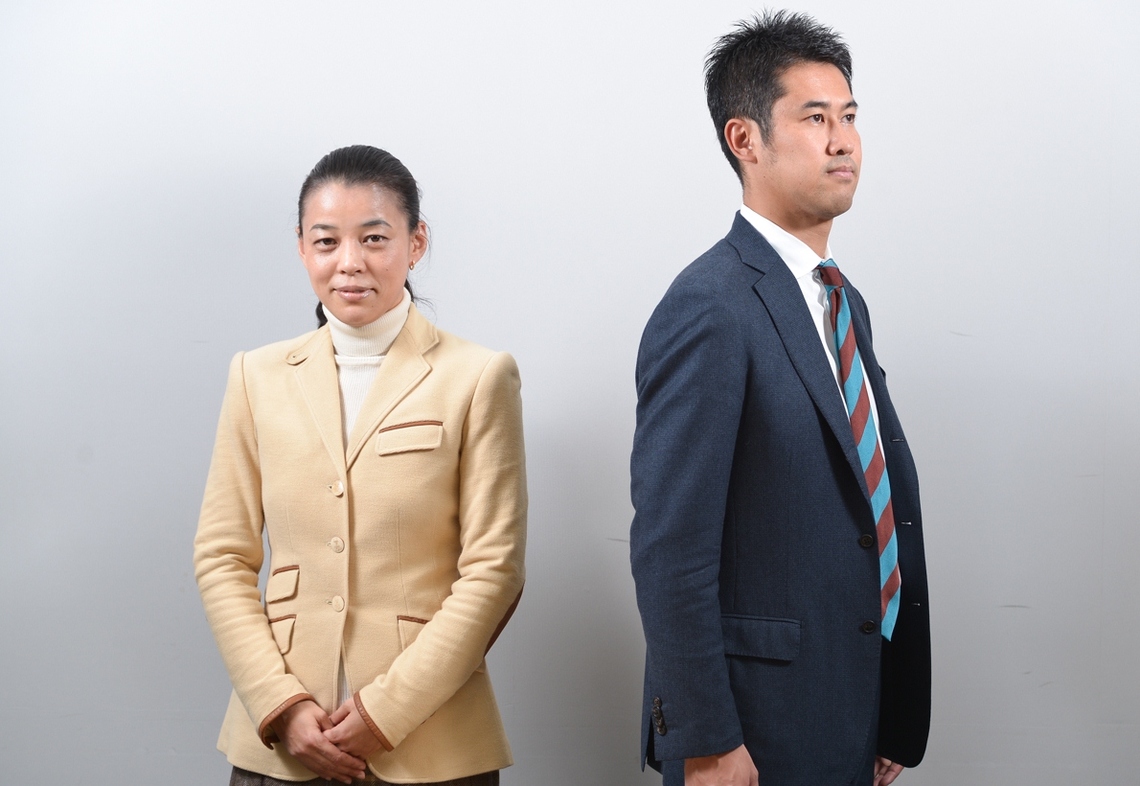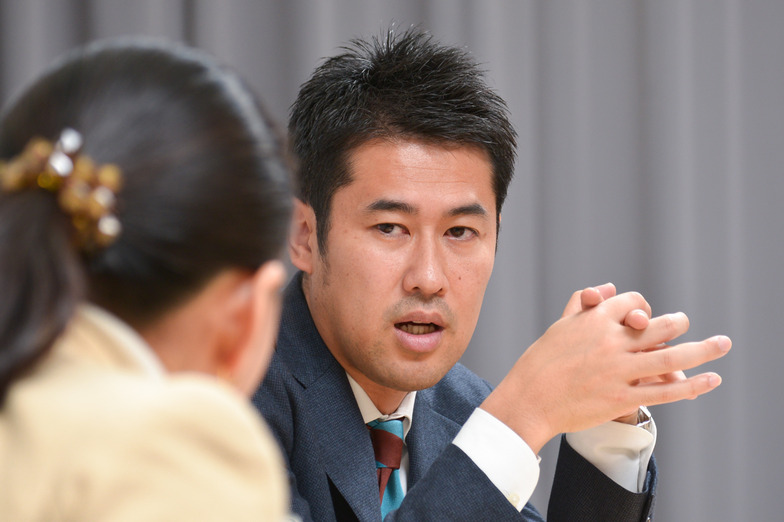This is Gunji. In this column, we deepen our understanding of content marketing from a field perspective. We've suddenly arrived at a crucial point. As mentioned last time, in the world of content marketing, there's no room for deception. We continued our discussion with Mr. Sugiura of Nextedge Dentsu Inc. about the specific conflicts and challenges arising in large-scale environments, and the methods for overcoming them.
Gunji:Last time, we discussed the necessity of facing consumers with genuine sincerity. This time, I'd like to delve even deeper.
Sugiura: First, why we must engage with genuine feelings is simple: the results of our initiatives are all visualized through data, and we are confronted with the outcomes.
For example, it's perfectly possible for a highly-rated copywriter to pour their heart into an online ad copy, only to get zero response. It's not uncommon for their click-through rate to be five or ten times lower than something created by a listing ad consultant. On the other hand, when a veteran copywriter gets hands-on experience with the PDCA cycle for banner ads or listing ads and learns based on data, their copy can become twice or even three times better than what someone with only online experience produces.
This experience underscores a fundamental truth: rather than relying on insider jokes or preconceived notions, we must fundamentally reconsider the end-user's perspective and advance creative work while carefully gauging responses. On the other hand, the ability to capture user insights and generate compelling angles is a universal creative skill, regardless of whether it's digital advertising or (traditional) mass advertising. This is precisely where the strength of creators from full-service agencies, who have extensive experience thoroughly "thinking through" creative concepts, can be fully leveraged.
Gunji: Working in this digital space has taught me that while copywriting techniques and fundamentals are essential, relying solely on traditionally honed skills can sometimes lead to unexpected outcomes. I once worked on communicating a vision for how we wanted to grow our business and the world we aimed to create, using the web as a tool. These kinds of themes tend to be abstract and complex, so I directed a junior copywriter to conduct thorough research and craft the message into easy-to-read copy.
In other words, we ended up putting tremendous effort into the "How." But this approach barely got any response (tears). It was then that I personally experienced the harsh reality: the skills we'd honed as our craft simply weren't enough to win on their own.
Sugiura: It's common for 70% of visitors to a meticulously crafted campaign site with various features to leave after viewing only the first page. However, knowing this can happen allows you to verify the results and devise the next steps. I believe accumulating that experience is crucial.
In that sense, as mentioned last time, it's not just about the creative itself; you also need to consider how to distribute it. Taking it further, the entire package includes output, reaction, and then the PDCA cycle based on that reaction. Without this shift in thinking, you won't survive in many ways.
Gunji: Exactly. It's difficult unless you've already engaged your target audience by the time you distribute. We often get requests like, "Please make it go viral with your planning skills," but realistically, that's akin to being told, "You must win every gamble..."
Sugiura: To put it another way, it's like demanding a home run (i.e., going viral) every single time you step up to the plate. While the possibility isn't zero, it's certainly not normal. Looking back over the past decade or so, I think you can count on one hand the number of cases where something reached a mass audience purely through going viral.
Gunji: A home run isn't guaranteed even when you aim for it. If you're playing to score runs, it's crucial to steadily work on getting on base—whether by getting hit by a pitch or drawing a walk.
Sugiura: And you build the ability to consistently get hits. In my experience, it's absolutely true that as you develop the skill to get hits, the knack for hitting home runs becomes clearer too.
Getting back to the point, I think it's tough to make going viral the primary goal.
Gunji: Also, as a premise to this discussion, we need to acknowledge that we're in an era where consumers choose their information. The idea that the initiative lies with the information providers—mass media or companies—is problematic. The very phrase "go viral" actually stems from the perspective that the sender is manipulating things.
Sugiura: The clients we at Nextedge Dentsu Inc. primarily work with today are direct marketing-oriented customers seeking clear "results" – like e-commerce or online material requests. They have a highly refined sensitivity to consumer reactions and a critical eye for advertising ROI. I believe this stems precisely from their direct engagement with consumers. By running alongside them through this PDCA process, our relationship evolves into one of mutual trust between partners.
Gunji: So you're moving forward toward shared objectives and goals.
Sugiura: They have business objectives, like a monthly sales target of X billion yen, and it's clear whether they'll achieve it or not. To reach that, we report advertising effectiveness daily, fine-tune strategies constantly, and confirm direction at weekly meetings. It's like climbing a mountain or running a full marathon together.
Gunji: So that naturally builds a positive relationship with consumers too, right?
Sugiura: Ultimately, I believe that carefully capturing consumers' reactions day by day is synonymous with meeting their needs. It's not about trying to cleverly convey our message. It's about honestly considering what we should do to make them genuinely feel it's good and take action. Ultimately, consumers decide which product aspects drive sales, so we base our actions on their behavior. While the thrill of mass marketing ads lies in creating demand-sparking moments that make consumers pause, in this digital age where web video ads are rising, I believe advertising should involve refining even those messages through trial and error to enhance precision.
Gunji: It's really about changing the very mindset we use when disseminating information, isn't it?
Sugiura: Because there's no room for deception, it forces us to become more pure. Becoming pure means truly facing consumers head-on, and I feel this will also shape our relationship with clients.
Gunji: In our daily work, we don't yet handle concrete sales like e-commerce sites, but we constantly monitor how many members we gain, how often users visit, and what content drives them. We then brainstorm what content would be best next. We have a "Send Us Your Thoughts" section for comments. When we get things like, "I get you want to promote your products, but it just felt like that's all it was," it can be discouraging, even if that wasn't our intention. But then we also get things like, "That was a great story, it really lifted my spirits." Beyond that, conversations within the community show us what kind of topics resonate and move people. We reference that feedback and incorporate it into our content.
Plans that incorporate the wisdom and ideas of everyday people tend to get a good response. You start to see that through experience, and you develop a feel for it.

Sugiura: "Real-time marketing" has become a key term in the digital world. Rather than pouring everything into one big project and running a three-month campaign, you start by anticipating what might work and what might not, and work on both simultaneously. The atmosphere is about starting at a level that won't get you a failing grade, and then focusing on the process of how to get it to an 80 or 90 percent level.
Gunji: It's like that book about the girl with the lowest test scores who passed the entrance exam for a prestigious private university, which is being made into a movie. Achieving that kind of success is incredibly tough until it truly sinks in as a tangible reality for everyone involved. Right now, I imagine you're interacting with people who share that common understanding. But as content marketing is practiced by people from diverse backgrounds, not just web specialists, we need to change the very approach we've grown accustomed to – preparing a masterpiece and running it for a set period. Sometimes we have to start conversations with, "Let's begin at a level that doesn't fall below the passing mark, then gradually aim for 80 or 90 points," only to hear responses like, "Getting started at around 80 or 90 points is what professionals do, right?" Persuading someone to do exactly what you want on a first meeting is tough even in ordinary relationships...
Sugiura: That gap is significant. Well, we've gained experience, so we don't just aim for the minimum passing level; we have know-how to start around 50 points. For fields we've worked in before or with a team, we can even start at 70 points. That difference comes down to whether you have that foundation built through experience and trial and error. If you do it properly, you end up with something quite solid. It requires steady, diligent effort. I like the fairy tale "The Three Little Pigs," and I always suggest we should be like the third little pig who builds a brick house to withstand the wolf's breath.
【Gunji's Eye】
What does it truly mean to communicate while facing consumers, understanding that they hold the initiative? This exchange starkly highlighted that we stand at a major crossroads. Against this backdrop, content marketing now demands different strategies and evaluations than before. This phenomenon marks the first step of digital communication's impact—particularly from social media—beginning to fully permeate the marketing world. We will inevitably be forced to confront this going forward.






